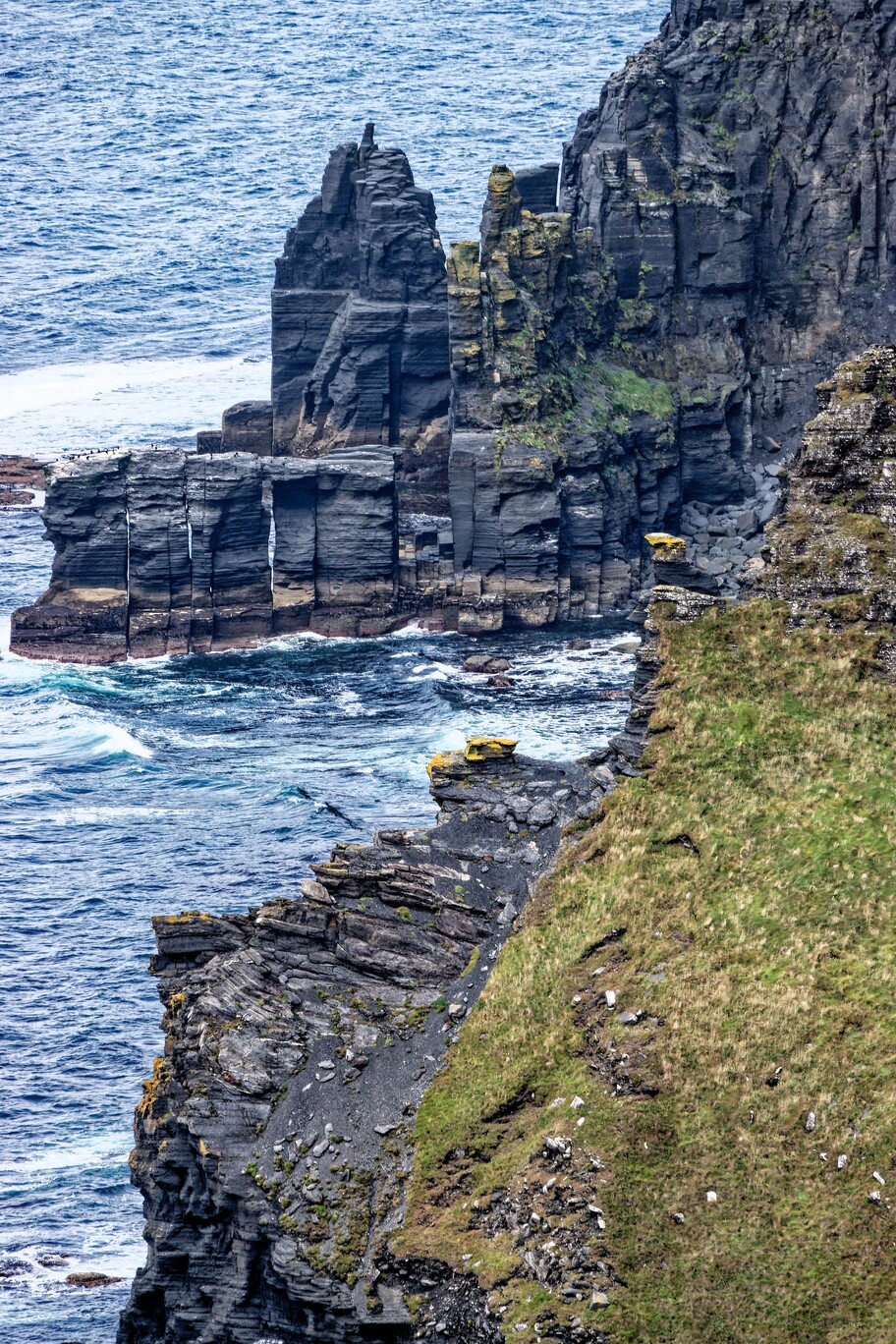The Cliffs of Moher, towering 600 feet above the Atlantic Ocean, have long captivated visitors with their breathtaking beauty. However, climbing these majestic cliffs is strictly forbidden and extremely dangerous. While there have been no official climbing attempts, numerous accidents and fatalities have occurred due to tourists venturing too close to the edge. This article explores the risks, incidents, and safety measures associated with the Cliffs of Moher.
What Are the Risks of Climbing the Cliffs of Moher?

The Cliffs of Moher present severe dangers to anyone attempting to climb them. Here are the primary risks:
- Sheer height: At approximately 600 feet high, a fall from these cliffs is almost certainly fatal.
- Unstable terrain: The cliff face is prone to erosion and rockfalls, making it treacherous for climbing.
- Harsh weather conditions: Strong winds and sudden fog can disorient climbers and increase the risk of falls.
- Lack of climbing routes: There are no established or safe climbing paths on the cliffs.
- Legal consequences: Attempting to climb the cliffs is prohibited and can result in fines or legal action.
Have There Been Any Successful Climbing Attempts?

To date, there have been no recorded successful climbing attempts of the Cliffs of Moher. The cliffs are not designed or maintained for climbing activities, and such attempts are strictly forbidden due to the extreme dangers involved.
What Incidents Have Occurred at the Cliffs of Moher?
While there haven’t been climbing incidents per se, numerous accidents have occurred at the Cliffs of Moher, primarily involving tourists venturing too close to the edge. Here’s a breakdown of the incidents:
- Average annual fatalities: 9 deaths per year
- Notable accidents: Approximately 12 per year
- Total recorded deaths (1993-2017): 66
Notable Incident: Peter Fitzpatrick’s Survival
One of the most remarkable incidents at the Cliffs of Moher involves Peter Fitzpatrick, who survived a fall in 1997:
- Age at time of incident: 12 years old
- Height of fall: 48 feet
- Outcome: Miraculous survival
- Rescue operation: Involved local residents and emergency services
- Method: Complex pulley system to manually pull him up the cliffs
This incident stands out as an extremely rare case of survival from a fall at the Cliffs of Moher.
What Safety Measures Are in Place at the Cliffs of Moher?
To prevent accidents and ensure visitor safety, several measures have been implemented:
- Ranger patrols: Staff regularly monitor the walking trails to warn visitors of dangers.
- Safety signage: Prominent signs are displayed to alert visitors of risks.
- Restricted areas: Unstable or dangerous sections are cordoned off.
- Visitor guidelines: Clear instructions are provided to stay on designated paths.
- Weather warnings: Visitors are advised to exercise extra caution during windy or stormy conditions.
How Do Rescue Operations Work at the Cliffs of Moher?
Rescue operations at the Cliffs of Moher are complex and often involve multiple agencies:
- Coast Guard involvement: Primary responder for cliff-related incidents
- Local emergency services: Provide additional support and resources
- Specialized equipment: Use of helicopters, boats, and climbing gear depending on the situation
- Coordination: Multi-agency approach to ensure efficient rescue efforts
- Challenges: Weather conditions and cliff terrain can complicate rescue attempts
What Are the Statistics on Accidents at the Cliffs of Moher?
Understanding the statistics helps emphasize the dangers associated with the cliffs:
| Statistic | Data |
|---|---|
| Annual average deaths | 9 |
| Notable accidents per year | 12 |
| Total recorded deaths (1993-2017) | 66 |
| International visitor deaths | 18 |
| Peak accident seasons | Summer and Spring |
| Suicide/open verdict cases (international visitors) | 50% |
These statistics underscore the importance of adhering to safety guidelines when visiting the Cliffs of Moher.
Why Is Climbing the Cliffs of Moher Prohibited?
The prohibition on climbing the Cliffs of Moher is based on several crucial factors:
- Extreme danger: The sheer height and unstable nature of the cliffs make climbing attempts potentially fatal.
- Environmental protection: Climbing could damage the fragile ecosystem of the cliffs.
- Preservation of natural beauty: Maintaining the cliffs in their natural state is crucial for their aesthetic and ecological value.
- Public safety: Prohibiting climbing helps prevent accidents and fatalities.
- Resource allocation: Allowing climbing would require significant safety infrastructure and rescue resources.
What Should Visitors Know About Safety at the Cliffs of Moher?
For those planning to visit the Cliffs of Moher, here are essential safety tips:
- Stay on designated paths at all times
- Obey all safety signs and barriers
- Keep a safe distance from the cliff edge, especially in windy conditions
- Supervise children closely
- Wear appropriate footwear for uneven terrain
- Be aware of weather conditions and dress accordingly
- Don’t attempt to climb or descend the cliffs under any circumstances
- Follow instructions from staff and rangers
How Has the Cliffs of Moher Management Addressed Safety Concerns?
The management of the Cliffs of Moher has implemented several measures to enhance visitor safety:
- Improved walkways: Construction of safer, more stable paths for visitors
- Enhanced barriers: Installation of additional fencing in high-risk areas
- Increased staff presence: More rangers and guides to monitor visitor behavior
- Educational initiatives: Programs to inform visitors about the dangers and importance of safety
- Technology integration: Use of surveillance cameras and warning systems in critical areas
- Collaboration with emergency services: Regular drills and improved communication protocols
- Visitor center information: Detailed safety briefings and educational displays
These efforts aim to balance the preservation of the natural beauty of the cliffs with the need for visitor safety.
What Are the Legal Implications of Attempting to Climb the Cliffs of Moher?
Attempting to climb the Cliffs of Moher can have serious legal consequences:
- Trespassing charges: Climbing attempts may be considered illegal entry to restricted areas
- Fines: Substantial monetary penalties for violating safety regulations
- Potential arrest: Severe cases may result in detainment by local authorities
- Liability issues: Climbers may be held responsible for rescue costs or damages
- Ban from the site: Repeat offenders might face restrictions on future visits
These legal ramifications serve as a deterrent and reinforce the importance of adhering to safety guidelines.
In conclusion, while the Cliffs of Moher offer breathtaking views and natural beauty, they are not a place for climbing or risky behavior. The numerous incidents and fatalities serve as a stark reminder of the dangers present. Visitors are strongly urged to enjoy the cliffs responsibly, staying within designated areas and following all safety guidelines to ensure a safe and memorable experience.
References:
– https://www.express.co.uk/travel/articles/1705659/ireland-cliffs-of-moher-dangerous-tourist
– https://pubmed.ncbi.nlm.nih.gov/29635642/
– https://thecircular.org/meet-the-only-man-who-survived-after-a-fall-from-the-cliffs-of-moher/
